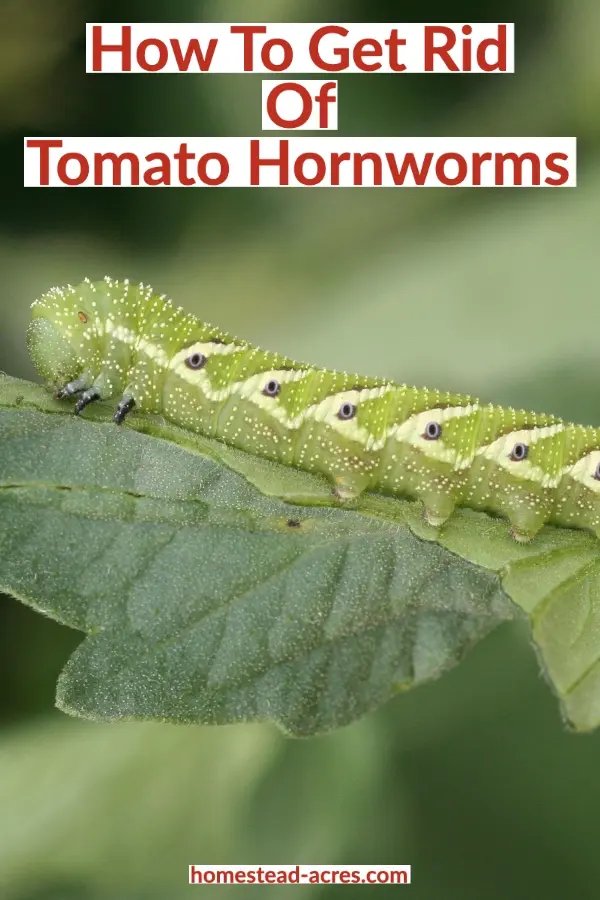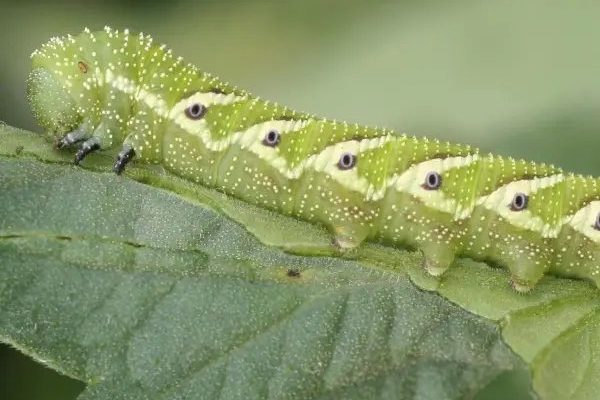
Hornworms are the larval stage of the hawk moth, and they’re notorious for their voracious appetite. They can quickly turn your thriving garden into a battlefield of half-eaten leaves. But don’t worry! Understanding these creatures and how to manage them in your container garden can save your plants and keep your gardening dreams alive. Let’s dig deeper into the world of hornworms and explore how you can deal with these caterpillars effectively.
What Are Hornworms?
Hornworms are the caterpillars of the five-spotted hawk moth (or the tobacco hornworm), and they usually measure about 3 to 4 inches long. Their bright green color helps them blend into the foliage, making them tricky to spot. Here’s the thing: hornworms have a reputation for being particularly hungry. They can consume an alarming amount of leaves in a short time, which is why catching them early is crucial.
These caterpillars mainly target tomatoes, peppers, and eggplants, which are common in container gardens. So if you’re growing any of these delicious veggies, you might find yourself face-to-face with a hornworm or two. Besides their appetite, hornworms are also interesting for their transformation into moths, which play a role in pollination. Isn’t nature fascinating?
Identifying Hornworms in Your Garden
Spotting hornworms can feel like a game of “Where’s Waldo.” They can camouflage so well that you might walk past them dozens of times without noticing. Typically, you’ll find them on the undersides of leaves, where they munch away, leaving behind large holes.
Here’s what to look for:
- Color: Hornworms are mostly green, but they may also have light stripes along their bodies, helping them blend in.
- Size: They can grow quite large, sometimes up to 4 inches, so if you see a big green caterpillar, it’s likely a hornworm.
- Damage: If your plants look like they’ve been in a wrestling match, with significant leaf loss, check for these pests.
In addition to physical characteristics, keep an eye out for their frass (that’s a fancy word for caterpillar poop). It looks like little black pellets and can often be found scattered near their feeding spots. If you see this, it’s a good indication you’ve got hornworms in your garden.
Why Hornworms Are a Problem
You might be wondering why these little critters are such a big deal. After all, they’re just munching on plants, right? Here’s the scoop: hornworms can decimate a healthy plant in just a few days. If you’re growing your own food, losing even a single plant can be disheartening and costly.
Moreover, hornworms reproduce quickly. One female can lay over 200 eggs, meaning a single problem can escalate fast. If not managed carefully, you could find yourself facing a hornworm army, ready to ruin your gardening efforts.
Lastly, there’s the risk of using harmful pesticides. Many gardeners are drawn to organic practices, and using harsh chemicals to deal with pests like hornworms can conflict with those values. Fortunately, there are natural solutions available that can help you manage hornworms without compromising your gardening philosophy.
How to Control Hornworms in Container Gardens
Dealing with hornworms doesn’t have to be an uphill battle. Here are some friendly strategies to keep your container garden hornworm-free.
1. Handpicking: One of the most straightforward methods is simply to pick them off your plants. You can do this in the early morning or late evening when they’re most active. Wearing gloves can help protect your hands from any irritants.
2. Natural Predators: Introduce beneficial insects such as ladybugs and parasitic wasps. These allies will help control hornworm populations naturally. You can often find these insects at garden centers or through online retailers.
3. Bacillus thuringiensis (Bt): This natural bacterium is effective against caterpillars like hornworms. When consumed, it disrupts their digestive systems and leads to their demise. You simply apply it according to the instructions on the packaging, and it’s safe for other insects and plants.
4. Neem Oil: This natural pesticide has a dual effect: it disrupts the life cycle of hornworms and acts as a repellent, ensuring they steer clear of your plants. Mix it with water and spray it on affected areas for best results.
Preventing Future Infestations
After you’ve tackled the current hornworm situation, it’s important to think about prevention. Here are a few strategies to reduce the chances of them coming back:
1. Monitor Regularly: Make it a habit to check your plants regularly. Early detection can save your garden from a lot of damage.
2. Clean Up Debris: After harvesting, remove any leftover plant material, as it can provide a breeding ground for pests. This includes fallen leaves and any dead plants.
3. Crop Rotation: If you grow the same plants in containers year after year, hornworms can become a recurring problem. Try rotating the types of plants you grow to confuse the pests and reduce their population.
4. Healthy Plants: Strong, well-maintained plants are less susceptible to pests. Ensure your plants are getting adequate nutrients, water, and sunlight.
The Benefits of Container Gardening with Hornworms in Mind
Believe it or not, seeing hornworms can actually help you become a better gardener! Dealing with these pests teaches you about the challenges of container gardening and how to adapt your methods. Each time you successfully manage a pest issue, you’re building resilience and knowledge for future gardening endeavors.
Container gardening also allows you to control your environment better. You can move your pots to different locations to keep them safe from pests and adjust their growing conditions with ease. Plus, if you’ve ever dreamt of having fresh herbs or veggies just outside your door, container gardening can make that dream a reality—hornworms included!
Hornworms can be a hassle in container gardening, but with the right strategies and a proactive approach, you can manage these little munchers effectively. Remember, handpicking and introducing beneficial insects are your friends in this battle. And by keeping your plants healthy and staying observant, you can prevent future infestations.
Gardening is all about learning and adapting. Each challenge, including those pesky hornworms, is an opportunity to grow—not just your plants, but your skills as a gardener. So grab those gloves, get out there, and show those hornworms who’s boss! Happy gardening!

